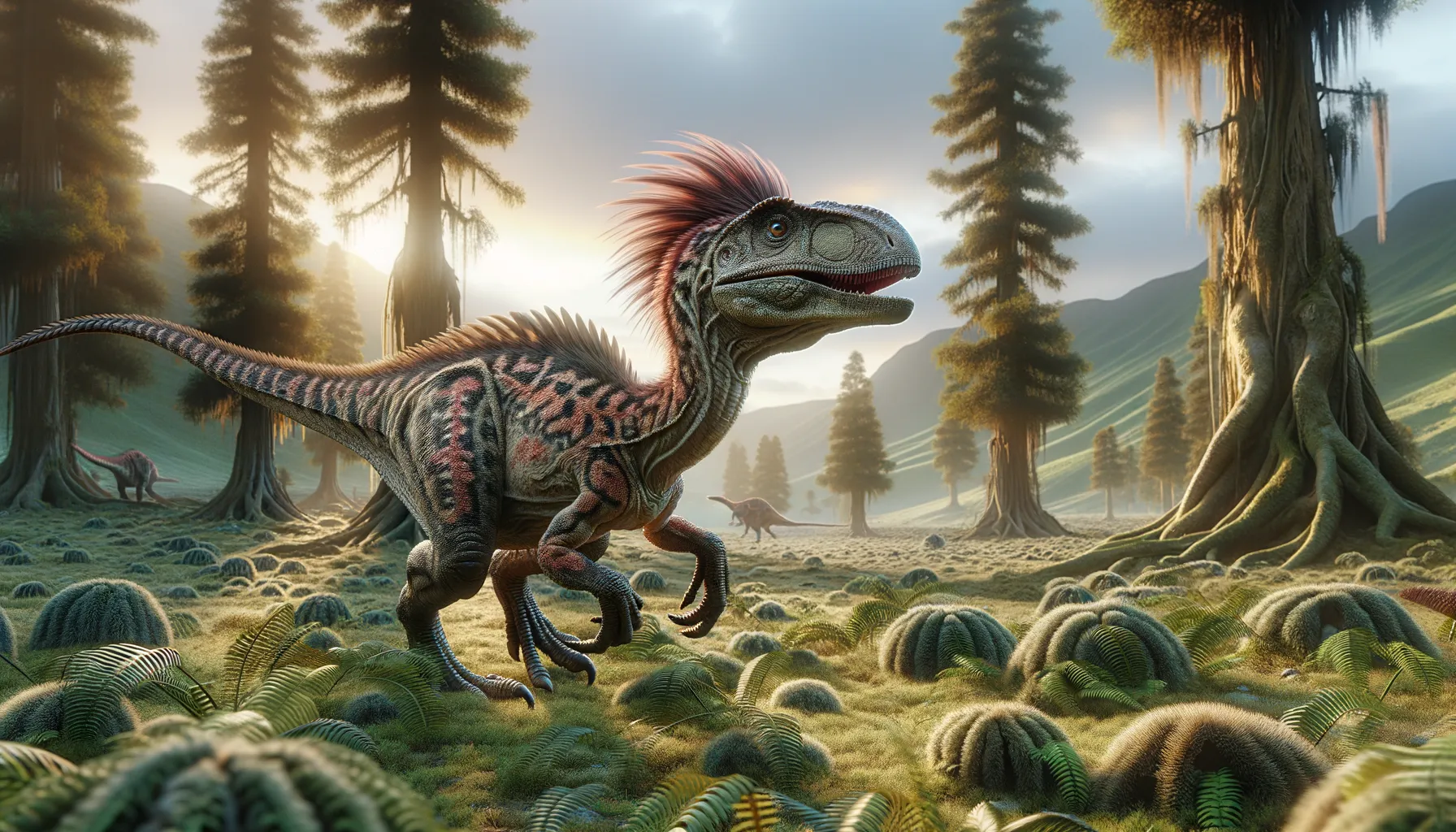
Shixinggia
Bridging dinosaurs and birds with ease.
Period
Cretaceous
Length
Measured about 2 to 3 meters long.
Height
Stood around 1 meter tall.
Weight
Approximately 20 kilograms.
Shixinggia was a small theropod dinosaur known for its bird-like features and intriguing anatomical structure. It roamed the Earth during the late Cretaceous period, adding to the diverse ecosystem of its time. Despite limited fossil evidence, it provides valuable insights into the evolutionary paths of theropods, bridging characteristics seen in both dinosaurs and birds. The discovery in China highlights the region's rich prehistoric past and underscores the gradual progression towards avian forms.
Diet
Shixinggia was likely an omnivore, feeding on both plants and small animals. Its diet may have consisted of insects, small vertebrates, and assorted plant material, adapting to the needs of an opportunistic eater.
Hunting
As an omnivore, it didn't actively hunt like larger carnivorous theropods. Instead, it might have foraged for small prey, using its agility to catch insects and small animals when opportunities arose.
Environmental challenges
Living in the late Cretaceous meant Shixinggia faced changing climates and environments. Competition for food amongst other small dinosaurs was fierce. Natural disasters such as volcanic eruptions could have periodically altered landscapes, disrupting its habitat and food sources. Additionally, predation by larger theropods would have posed a significant threat to its survival.
Speed
Likely slow due to its small size and build.
Lifespan
Estimated to have lived up to 20 years.
First discovery
Discovered in Shixing County, Guangdong, China in 2003.
Fun Facts
- Shixinggia was a therizinosaur, a type of dinosaur known for its large claws and herbivorous diet.
- It lived during the Late Cretaceous period, around 83 to 70 million years ago.
- Shixinggia was discovered in what is now China, specifically in the Guangdong Province.
- Despite having claws that could reach over 1 meter in length, it primarily used them for foraging vegetation.
- The name 'Shixinggia' comes from Shixing County, the location where it was found.
- Scientists believe it was a feathered dinosaur, giving it a bird-like appearance.
- Shixinggia is closely related to other therizinosaurs, which are more famously known for their unusual potbellied bodies.
Growth and Development
Shixinggia likely hatched from eggs and underwent rapid growth during its early life to avoid predators. As a small dinosaur, its growth rate could have been critical for reaching reproductive maturity quickly. Learning to forage for food and evade predators would have been key aspects of its development.
Habitat
Shixinggia inhabited areas that were likely forested or at least lush, sustaining diverse flora and fauna. The region's environment would have provided adequate cover from predators. Availability of both plant material and small animals supported its omnivorous diet. Seasonal variations in its habitat might have influenced migratory or adaptive behaviors.
Interaction with other species
Coexisting with various theropods and herbivorous dinosaurs, Shixinggia may have encountered competition for resources. Its small size could have made it prey for larger dinosaurs. Symbiotic relationships with flora might have aided in seed dispersal. Competition with other omnivores could have impacted its food acquisition strategies.
Natural lifespan
Shixinggia could naturally live up to two decades in the wild.
Reproduction
Shixinggia likely reproduced by laying eggs, similar to other theropods. Nests would have been constructed on the ground, possibly hidden among vegetation. Parental care might have been minimal, with hatchlings quickly gaining independence. Social structure could have influenced nesting sites and protection strategies.
Social behaviour
Little is known, but Shixinggia might have exhibited social behaviors common in small theropods. It could have moved in small groups for protection against predators. Territorial behavior might have manifested around feeding areas or nesting sites. Interactions could have included vocalizations or displays to communicate threats or mating signals.
Fossil locations
Shixinggia fossils were discovered in Shixing, Guangdong Province, highlighting China's significant paleontological resources. Only limited remains have been found, restricting detailed analysis. However, these fossils contribute to the understanding of small theropod distribution in Late Cretaceous Asia.
